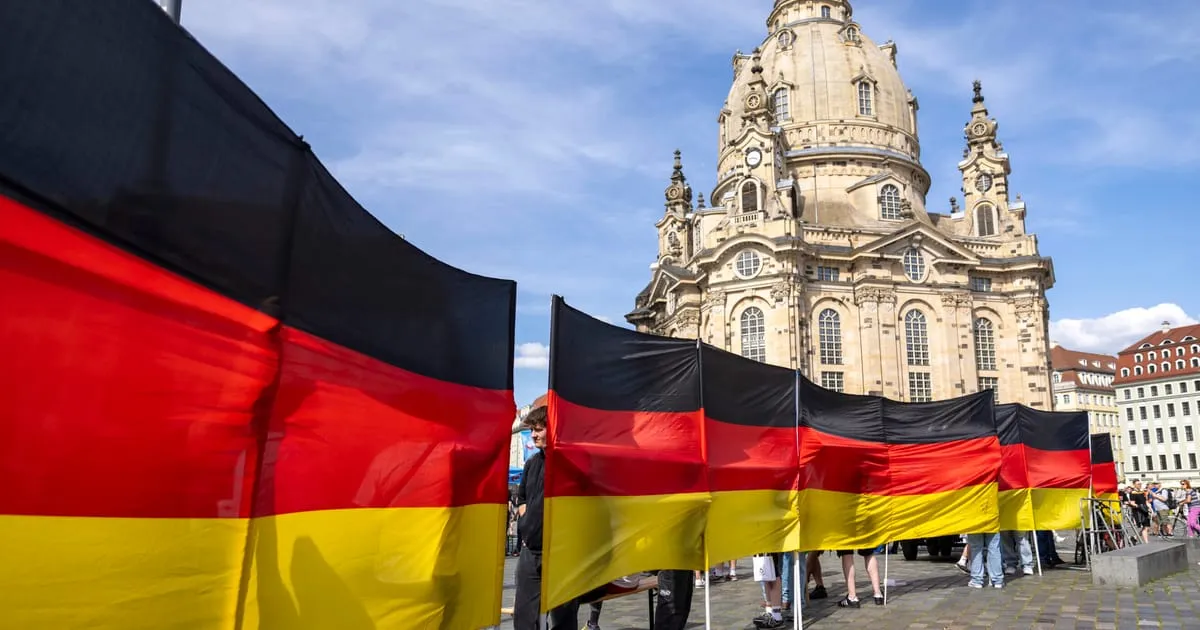
A divided Germany has emerged from Sunday's election, underscoring the deep-seated regional disparities within the nation. The vote marked a significant defeat for the Social Democrats (SPD) of Chancellor Olaf Scholz and a distinct victory for Friedrich Merz’s Christian Democratic alliance (CDU/CSU), though this success was not uniform across the country.
In 2021, the SPD claimed victories on both sides of Germany’s enduring East-West divide. However, in a dramatic shift, the electoral map—once painted SPD red—turned black for Merz’s conservatives in the West. Meanwhile, the East was overwhelmingly blue, indicating strong support for the Alternative for Germany (AfD), which achieved its best result yet.
This outcome presents an inherent risk, as Joachim Behnke, a political science professor at Zeppelin University, warned. The 2025 vote may exacerbate East Germans' sense of isolation, potentially turning it into a self-fulfilling prophecy.
With robust results for the far-right AfD and the far-left The Left party in the East—neither of which are likely to join the government—eastern German politicians could wield limited influence in future decision-making. Behnke cautioned that people in the eastern states might feel even less represented than they already do.
There is little trust among eastern Germans that centrist parties prioritize their interests. An election day survey revealed that nearly a quarter of eastern Germans identified the AfD as the party best defending their interests, with one-fifth pointing to The Left. In contrast, the likely governing partners were favored by only about 10 percent each, while 20 percent did not list any party at all.
Early election night projections by broadcaster ZDF showed a significant gap: the AfD and The Left received far more support in the East than in the West, where Merz's party fared better. The CDU managed to reach 30 to 40 percent of the vote in constituencies across Germany but struggled to exceed 20 percent in the East.
Despite this, the CDU barely stayed ahead of other parties in many constituencies, although its Bavarian sister party, the CSU, maintained a comfortable lead in most areas. Conversely, where the AfD won, it often did so with substantial margins, particularly in the East, where it garnered close to 50 percent of the vote in numerous constituencies.
The AfD’s success in eastern Germany is the result of a long-term strategy. In its strongholds like Bautzen, Görlitz, and Sächsische Schweiz-Osterzgebirge, the party has consistently won both constituency and list votes since 2017. This election saw the AfD expand into northern parts of former East Germany and urban constituencies like Dresden and Leipzig, securing top positions for the first time in a federal election.
Undeterred by the AfD's advance, The Left also solidified its presence in East Germany, a traditional stronghold. Despite languishing in the polls weeks before the election, The Left capitalized on a last-minute surge, winning nearly 9 percent of the vote and six direct mandates, including territories in Berlin and some western regions.
As the AfD and The Left gained ground, the SPD suffered a record low in a national election, dropping from 25.7 percent in 2021 to just 16.4 percent. The party's performance in the East was particularly poor, and it lost dominance in several heartlands in the northwest, including the Rhine-Ruhr region.
The liberal Free Democratic Party (FDP) of Christian Lindner also faced a significant setback. Early projections suggested the party might meet the 5 percent threshold required for Bundestag representation, but it ultimately fell short with just 4.3 percent of the vote, excluding it from the next Bundestag.
Germany's youth vote reflected a shift in political allegiances. Previously favoring the FDP and the Greens, young voters turned to the AfD and The Left in this election. The data also highlights a warning for Merz’s conservatives: while they received strong support from voters aged 45 and older, their appeal among younger voters, although improved from 2021, remained tepid at best.